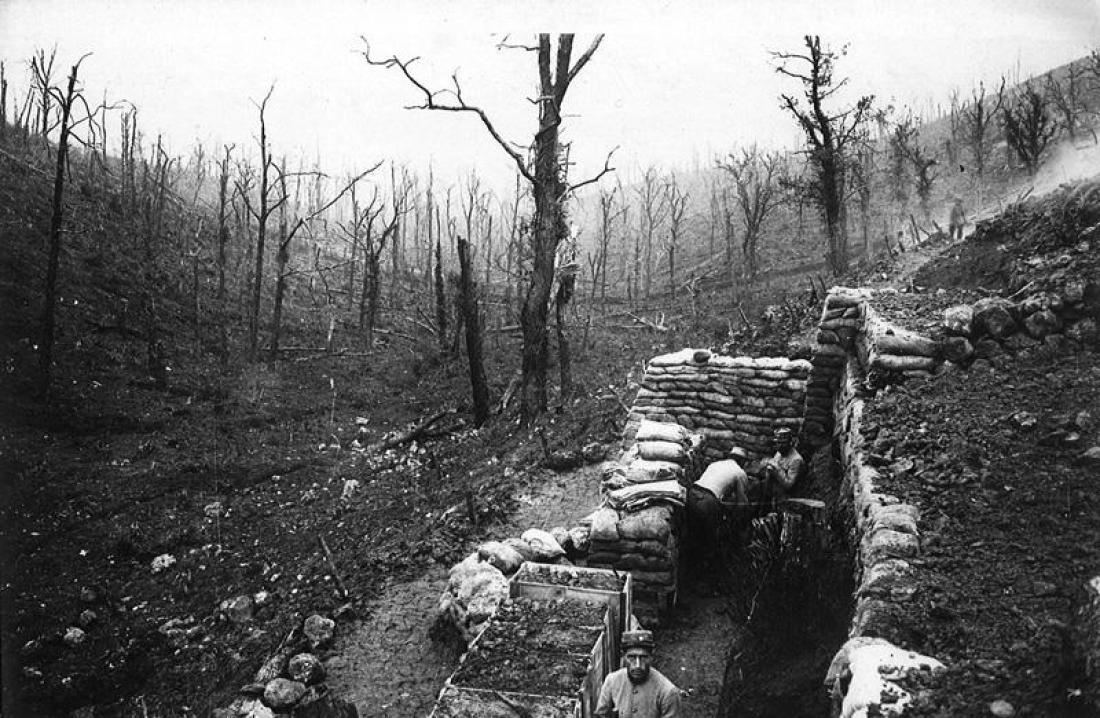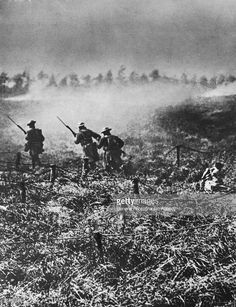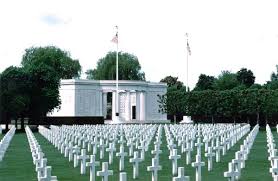German Morale Worse By the Day.
A Sense of Looming Defeat.
Special to The Great War Project
(16 September) The battle for the St. Mihiel Salient begins in earnest in mid-September a century ago.
It is fierce, and there is a great American presence in the effort to drive the Germans out of the bulge in their line in northern France.

Allies at St.Mihiel Salient.
Historian Martin Gilbert reports: “When the battle began on September 12th more than 200,000 American troops, supported by 48,000 French, moved forward in pouring rain along a twelve-mile front.”
Then this starling fact:
“During the advance, the American gunners fired 100,000 rounds of phosgene gas shells.”
According to historian Gilbert, 9000 Germans are incapacitated in this gas attack, and fifty Germans are killed.

American troops at St. Mihiel.
Much of this battle takes place in the air. “The largest ever number of aircraft were in combat,” Gilbert reports, with nearly 1500 aircraft – American, French, Italian, Belgian, Portuguese and Brazilian – taking part.
They are under American command. “The Germans had no way of matching those numbers, or the freshness and zeal of the Americans, many of whom were in action for the first time.”
“Within forty-eight hours the Americans had captured 13,000 prisoners and 200 guns. The German High Command was astounded by the swift initial American success.”
But the Americans too had suffered in the battle for the St. Mihiel Salient. “The Americans,” reports historian Gilbert, “had not won their victory without considerable loss.” The American dead from this battle number some 4500.
But it nevertheless is a considerable strategic achievement. The straitening of the Salient, that is the removal of the bulge in the front line, and the liberation of St. Mihiel town itself, were important achievements. The Salient, according to Gilbert, had been in German hands for four years.
“It had earlier resisted two French attacks…
“It is as swift and neat an operation as any in the war,”
wrote the Manchester Guardian, “and perhaps the most heartening of all its features is the proof it gives that the precision, skill, and imagination of American leadership is not inferior to the spirit of their troops.”

Big news at St. Mihiel.
Gary Mead as well as other historians points out that the Americans caught the Germans in retreat, but that didn’t lessen the significance of the victory at St. Mihiel. Certainly the Germans were none the better for their retreat.
“Fortunate they may have been,” writes Mead, “in catching the Germans in retreat, but this relatively bloodless victory was a remarkably useful morale boost for the Allies.
“It was also a serious psychological blow to the Germans, even though they were conducting an orderly retreat. The ceding of any ground in the coveted territory of Alsace-Lorraine was a bitter blow.”
Observes Gilbert,
“The American soldiers had at last obtained the recognition they deserved.”
War historian John Keegan reports: “an ever stronger American army was taking an increasingly important part in operations.”

War memorial at St. Mihiel.
Morale on the German side was proving worse by the day. There was a sense of “looming defeat” among the German army along the front line, certainly caused in part by the “sheer number of Americans arriving daily at the front.”
